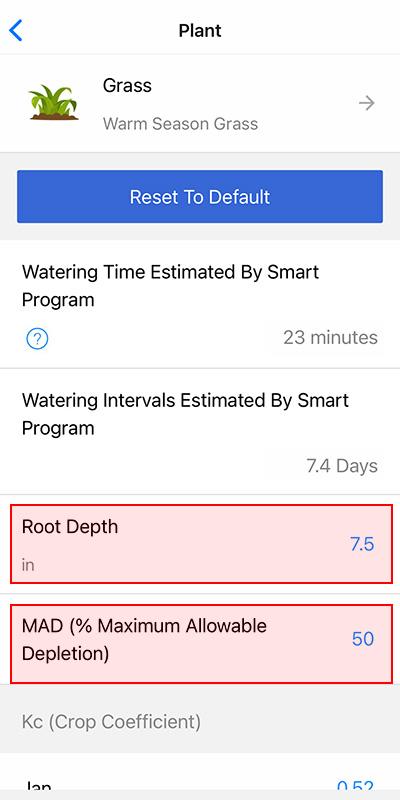How Smart Watering Works
What does the smart sprinkler controller take into account when scheduling the Smart Program?
June 25, 2021
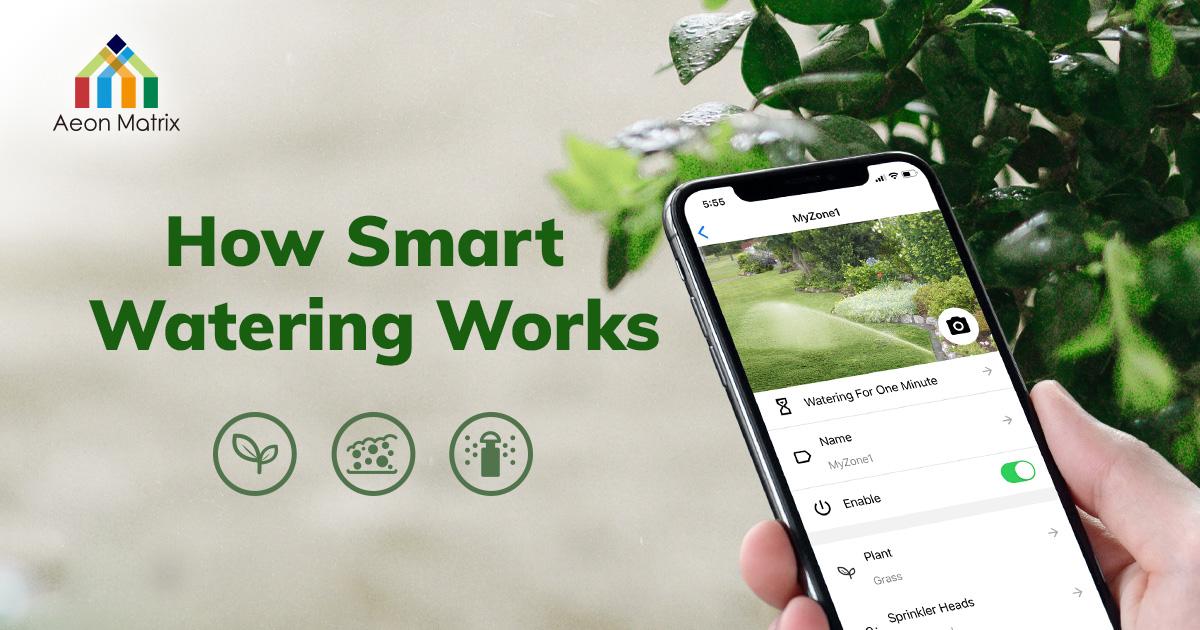
Root Depth and Soil Type
When it comes to smart watering, first we need to understand the relationship between soil and water. Soil is similar to a sponge. When water is applied, it absorbs and holds the water up to its full capacity. The water evaporates until it dries out if no water is received. The size of the sponge is determined by the plant’s Root Depth (RD).

- Field Capacity (FC) is the maximum amount of water the soil (sponge) can hold. Any excess water applied becomes water run-off or gets drained away by gravity. It can be represented in percentage of the Root Depth, or in inches or centimeters:
FC (inch or cm) = FC (%) * Root Depth (inch or cm)
- Permanent Wilting Point (PWP) specifies the minimum soil moisture that a plant requires not to wilt. Any decrease of the soil water content will result in a plant withering. It can also be represented in percentage of the Root Depth, or in inches or centimeters:
PWP (inch or cm) = PWP (%) * Root Depth (inch or cm)
- Plant Available Water (PAW) is the water content range between Field Capacity and Permanent Wilting Point that plants can utilize from the soil.
- Maximum Allowable Depletion (MAD) indicates the maximum amount of Plant Available Water (PAW) allowed to deplete from the soil’s Field Capacity.
Generally, 50% MAD is regarded as a reasonable value. For shallow-rooted plants or compact soils, a smaller MAD (30-50%) should be employed; for deep-rooted plants or lighter soils, a larger MAD (50-70%) could be considered.
When the soil’s water level is below the MAD line, a watering task will be scheduled to water up to the FC line. In this way, the Smart Program calculates how often and how much water should be applied.
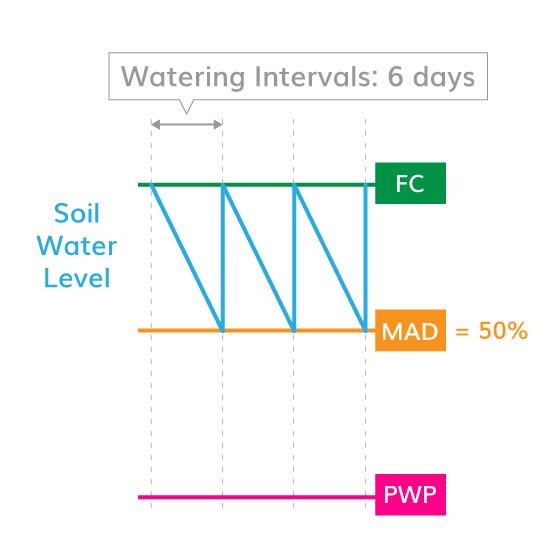
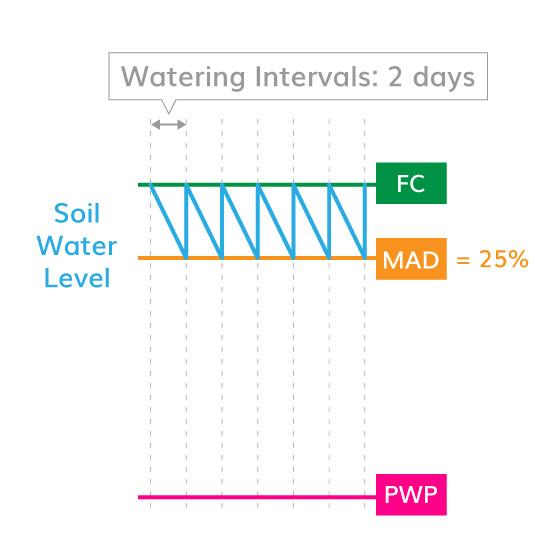
Application Rate (AR)
The water application rate is the depth of water applied by sprinklers in a zone in inches or centimeters per hour (in/hr or cm/hr). This is the parameter used to convert the amount of water to watering time. A low estimated application rate could lead to longer-than-expected watering times.
WateringTime = Water Amount (inch or cm) / AR
The application rate can also be converted from the volumetric flow rate of a sprinkler head (gallons/minute or GPM):
Application Rate (AR) = GPM * Number of Sprinkler Heads / Zone Area
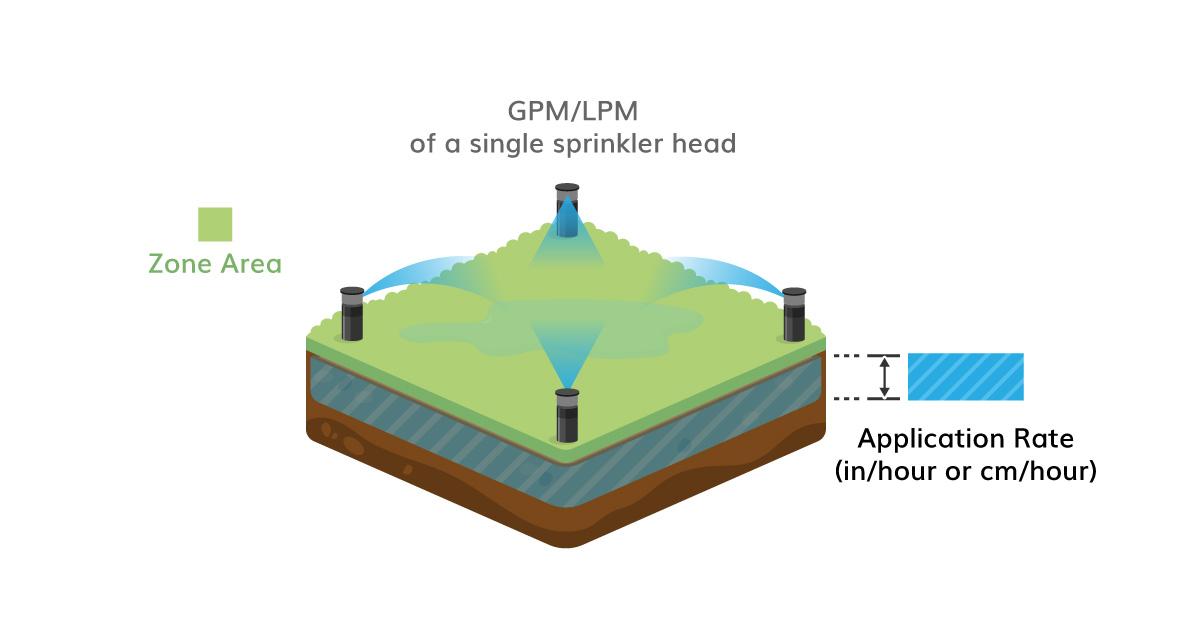
Setups in the Yardian App
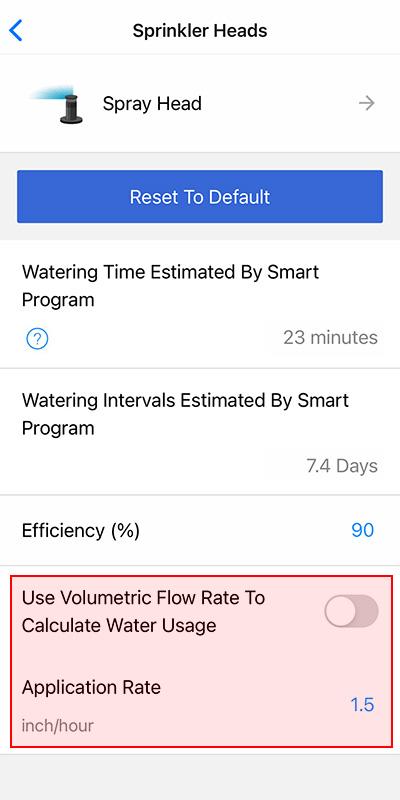
In the Sprinkler Heads page, you can specify the Application Rate (in/hr or cm/hr), or opt for Volumetric Flow Rate of a sprinkler head in GPM and the number of sprinkler heads. Please specify the Zone Area as accurately as possible.
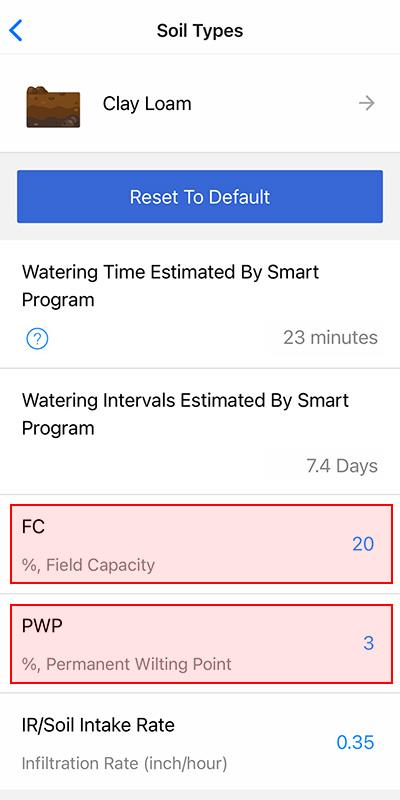
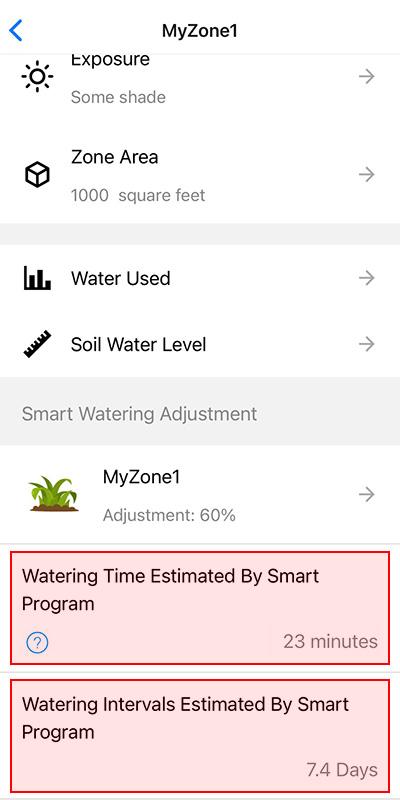
Try it out now and start enjoying watering in a smarter way! If you need any further support, please visit the Support Center.
